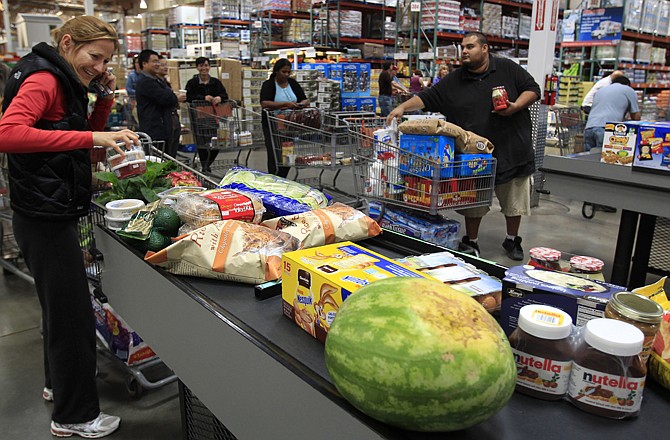WASHINGTON (AP) - Americans earned and spent more in March, but much of the extra money went toward more expensive gasoline.
Personal incomes rose 0.5 percent last month and consumer spending increased 0.6 percent, the Commerce Department reported Friday. But after adjusting for inflation, spending rose a much more subdued 0.2 percent and after-tax incomes were essentially flat.
Consumer spending had been expected to post solid gains this year, helped by stronger employment growth and a 2 percentage-point cut in Social Security payroll taxes. But Americans are paying more for gas, prompting economists to scale back their growth forecasts.
The national average at the pump on Friday was $3.90 a gallon- 31 cents higher than a month ago and more than $1 than what consumers paid a year ago.
Less growth in consumer spending was a big reason the overall economy slowed sharply in the first three months of the year. The 1.8 percent growth rate was weaker than the 3.1 percent growth in the previous quarter. Consumer spending is important because it accounts for roughly 70 percent of economic activity.
The rise in spending was heavily concentrated in nondurable goods, which includes gasoline. Spending in this category jumped 0.9 percent while spending on longer-lasting manufactured goods, such as autos, was essentially flat. Spending on services rose 0.5 percent.
The savings rate remained unchanged at 5.5 percent of after-tax incomes in March. Americans saved just 2.1 percent in 2007 before the recession. The bursting of the housing bubble has made them more cautious with their finances.
A key inflation gauge that is closely watched by the Federal Reserve showed prices rising 0.4 percent in March, the same as February. Excluding food and energy, prices were up a more subdued 0.1 percent in March and are 1.8 percent higher than a year ago, well within the Fed's comfort zone.

